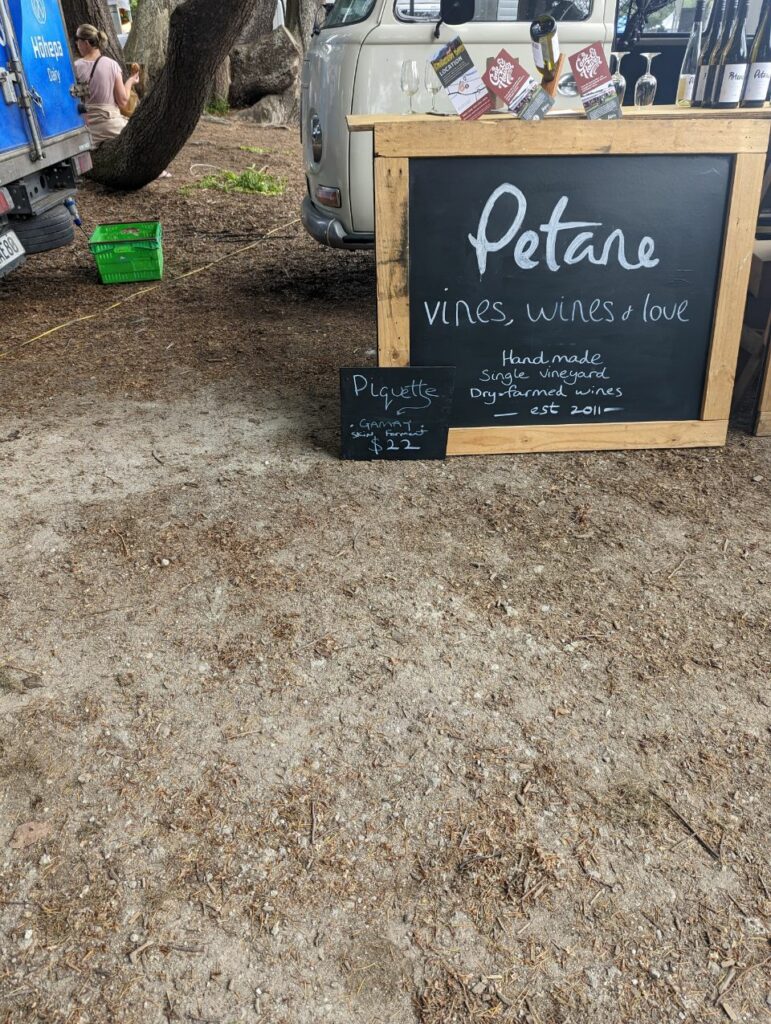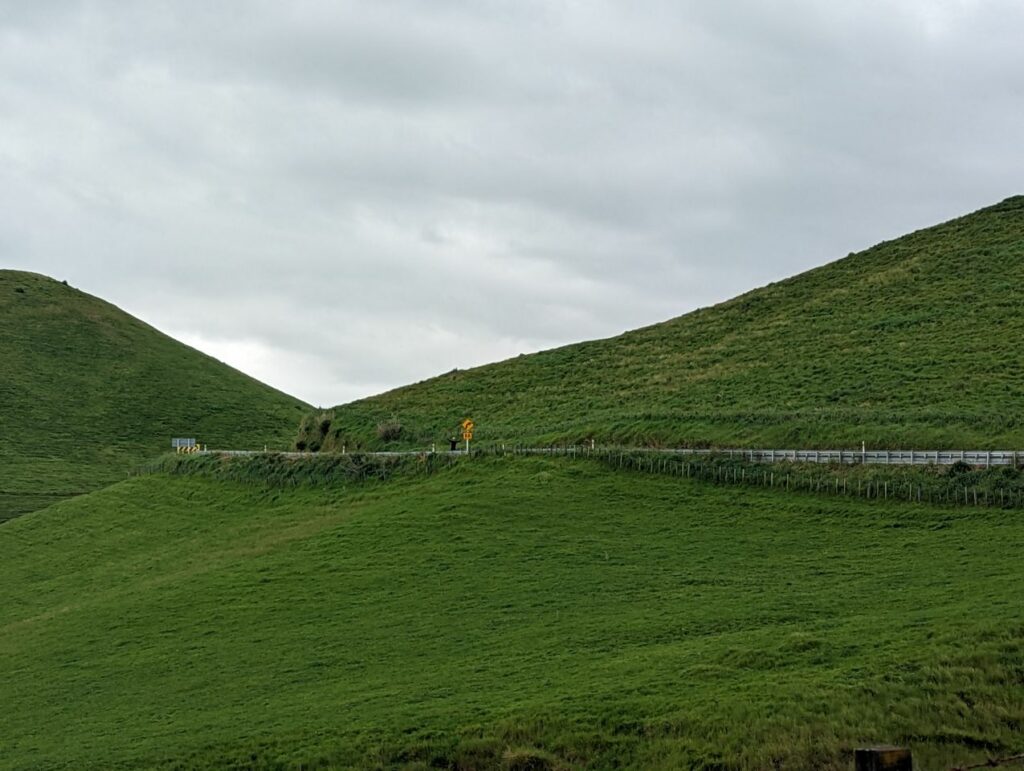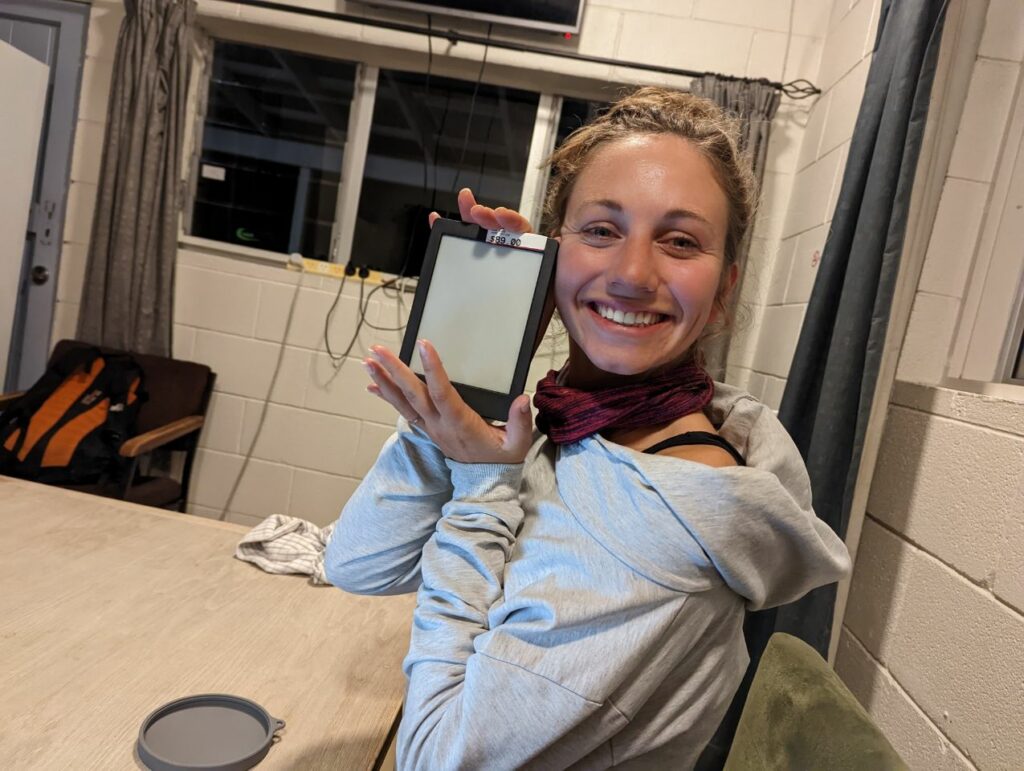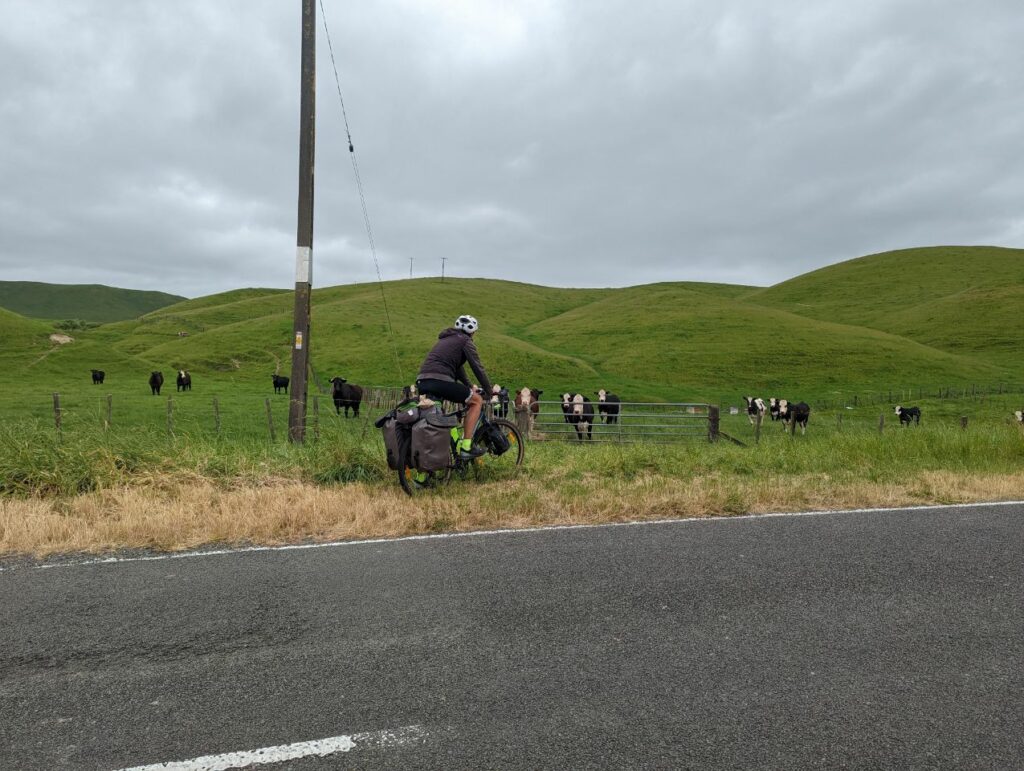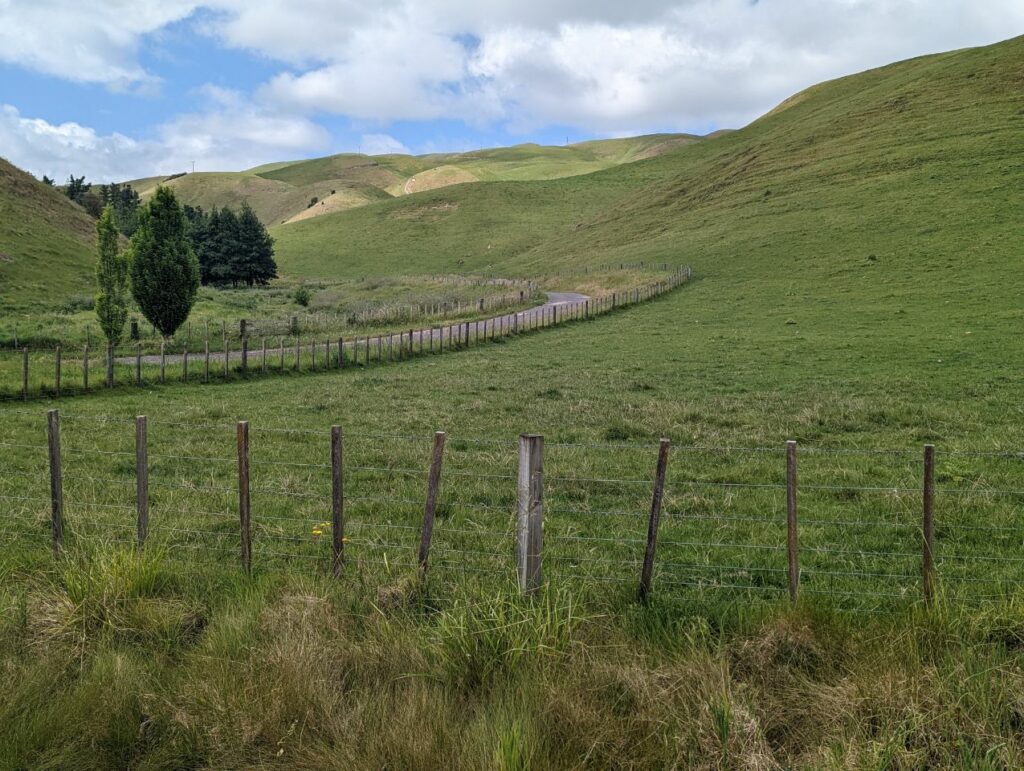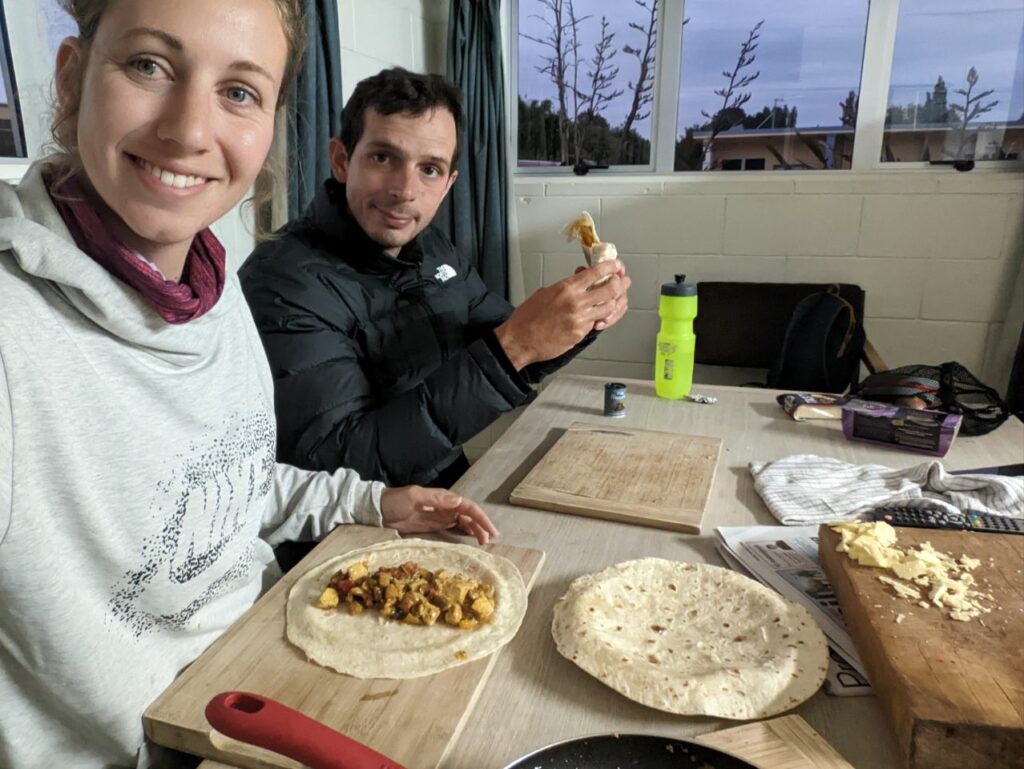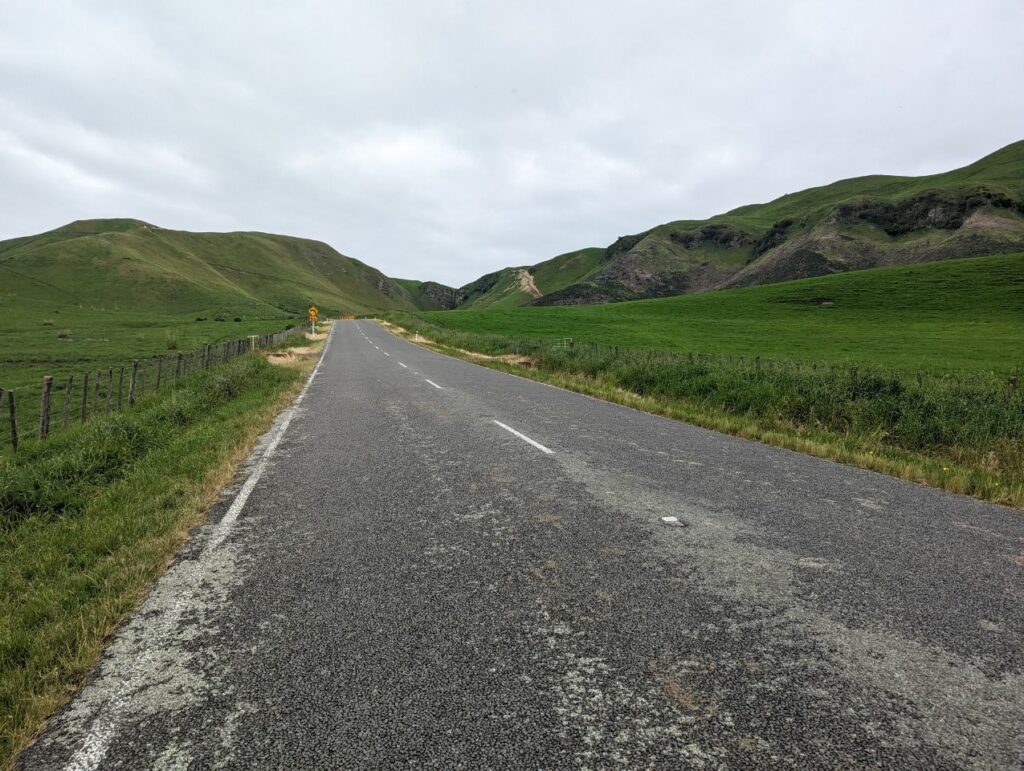Grand départ pour Wellington les prochaines étapes vont être un peu plus longue aujourd’hui 60 km !
Mais avant ça petite visite du marché fermier de Hastings où nos hôtes vendent leur miel
On leur fait un dernier coucou avant de partir
Et j’ai enfin trouvé une Kobo doccas’ pour la suite du voyage ( plus pratique que les livres).
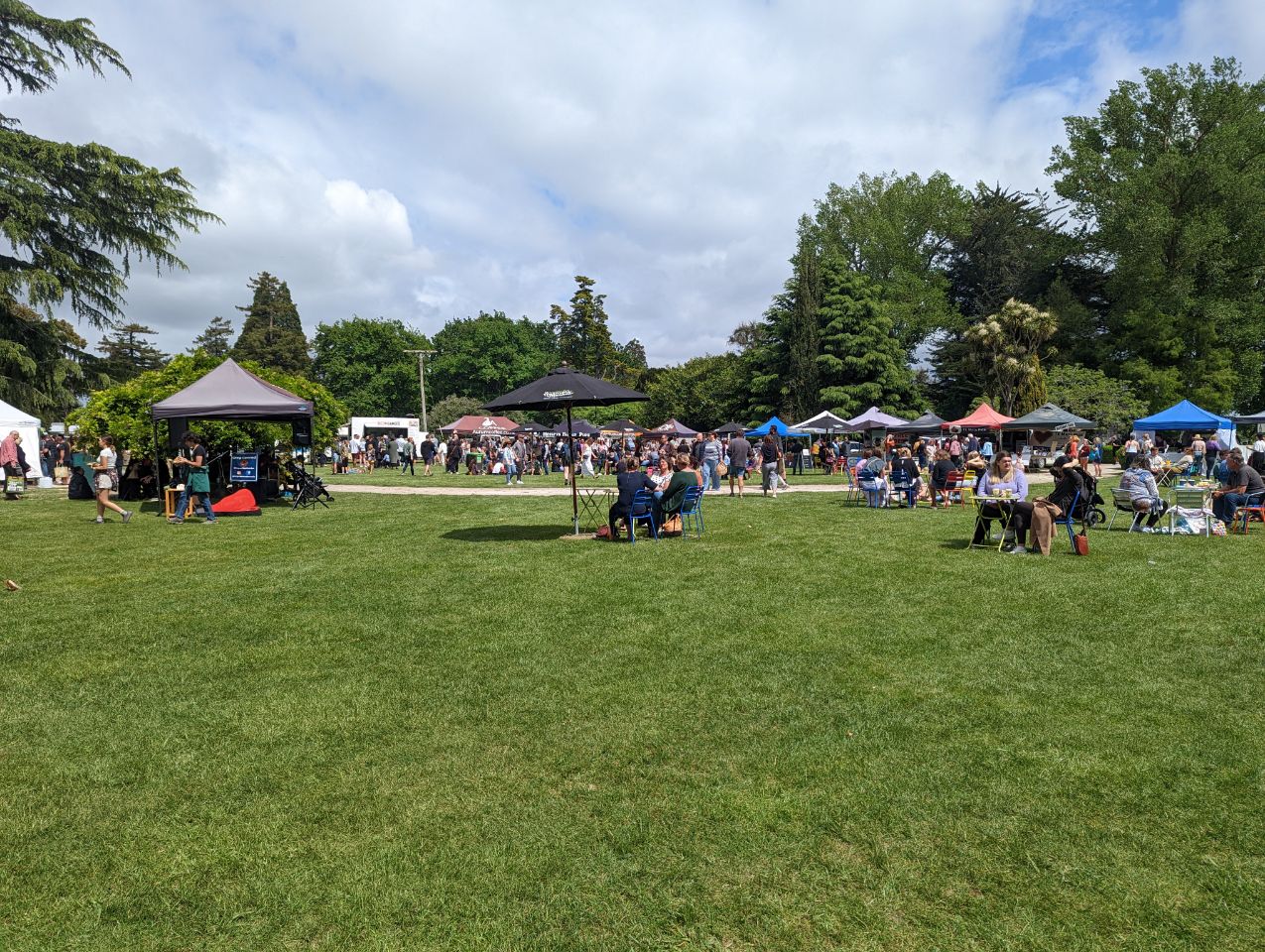
WAIPUKURAU
Novembre 6th 2022
Waipukurau is the largest town in the Central Hawke’s Bay District on the east coast of the North Island of New Zealand. It is located on the banks of the Tukituki River, 7 kilometres south of Waipawa and 50 kilometres southwest of Hastings
History and culture
Māori
Central Hawkes Bay, where the town is located was settled by Te Aitanga a Whatonga, the descendants of Whatonga, grandson of Toi Kairakau. These were the Ngati Tara and Rangitāne peoples. In the mid 1500s the Ngāti Kahungunu invaded the area from the north and in the subsequent fighting drove the Rangitāne south into the Tahoraiti area (Dannevirke). Warfare continued through the 1600s until the time of Te Rangikoianake. His first child Te Kikiri was adopted by the Ngai Toroiwaho to be their chief – he had mana over the Waipukurau district.[2]
Fighting broke out again in the 1800s at Mangatoetoe between Ngai Te Upokoiri and Ngāti Te Rangikoianake of Poukawa. Several of Te Rangikoianake’s grand children were killed in this fight. Pareihe, a Ngati Rangikoianake Chief, avenged the defeat in a battle at Pukekaihau, Waipukurau after which a peace accord was made between the two tribes.[2]
The accord was short lived with the death of Te Wanikau’s brother-in-law (Chief of Ngai Te Upokoiri) prompting further conflict over the erection of rahui poles on Lake Poukawa, Ngati Rangikoianake’s eel fishing area. The conflict, starting around 1819 and lasting till 1824 ended with the Ngati Rangikoianake and other local tribes evacuating the area and settling at Mahia. In the latter part of the 1820s Pareihe attacked the Ngai Te Upokoiri and regained the lands they had lost, with the Ngai Te Upokoiri taking refuge in the Manawatu. A peace accord was made between Pareihe and the Ngāti Tūwharetoa in the late 1830s. The Ngati Tuwharetoa had been allied with the Ngai Te Upokoiri.[2]
Within the current township is Pukekaihau hill, now in Paul Hunter Memorial Park,[3] the site of the Māori pa, from which it gets its name. Waipukurau is said to mean the water of pukerau, wai being water and pukerau being a type of fungus. The pa was near the old Māori trail from the Manawatu Gorge and Hawkes Bay. The first Europeans who are known to have passed through the area were Bishop George Selwyn and Chief Justice Sir William Martin in November 1842 en route to Napier.[4]

